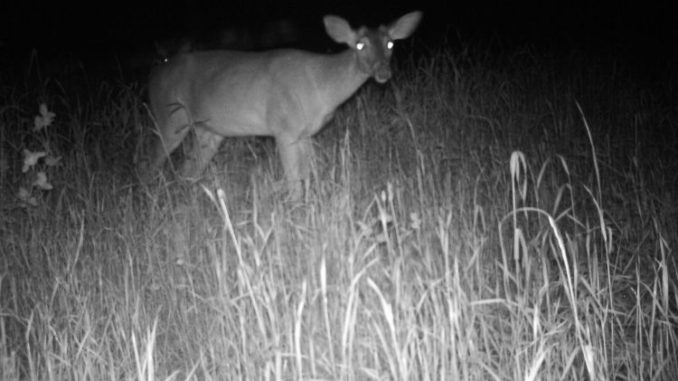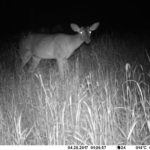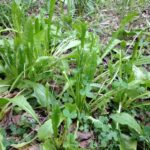
What is the most important component of deer management?
I made the statement last month in this column that now is the time to start preparing for the 2017 deer season if you want to have success. It begins with examination of the 2016 harvest data and surveying the 2017 habitat conditions. If the data indicates that the growth and development occurring within each age class is above average and if the survey finds better than average habitat conditions, then you can expect to find quality deer available for harvest during the 2017 season.
I believe there are four components of a successful deer management program; genetics, age, herd and habitat. All of these work together for success. Of these four I have no doubt that habitat is by far the most important factor. It is the single key for success.
Genetics
The genetics of deer in Louisiana has never been an issue as far as quality or trophy deer are concerned. Louisiana has and still does grow both quality and trophy deer. The biggest factor concerning genetics in Louisiana is that it controls the breeding season of deer in the state. Deer in Areas 1 and 7 breed late, January and February; Deer in Area 2 breed from mid October through November; Deer in southeast Louisiana breed in December and January and deer in southwest Louisiana breed in September and October. The key for hunting success is to have seasons open during the rut.
Genetics does impact antler growth and configuration and we will discuss this aspect of deer management in another column. Again, genetics is not a problem for our Louisiana deer herds.
Age
A lot is being made of the fact that deer herds in the Southeast have grown older and that hunters are now shooting more older bucks than those that are 1 ½ years old. Years ago most of the buck kills consisted of young deer in the yearling age class. Various factors have worked together to change that. I am a little alarmed with this because it appears to me that the mindset of hunters today is to let all the young deer live and let them get older. While the bucks are getting older, other factors are working that prevent these older bucks from being the deer that hunters want to shoot, consequently they are passing them up thinking that they are young deer that will get better when in fact they are old deer and this is the best they are going to do. Older bucks does not necessarily mean bigger bucks; nutrition is the key to making them bigger and overrides the age factor. Because of this there may be more older bucks dying from natural mortality than are being harvested by hunters. This too will be discussed in a later column.
Herd
Years ago there was an article in a popular magazine about the thundering deer herds that were increasing all across the Southeast. Ideal habitat conditions and buck-only hunting made for rapidly expanding deer herds. Today most are of the opinion that past years of heavy doe harvest have made for deer herds that are decreasing in numbers. We see this today in the fact that we have reduced deer tag allotments for some of the deer areas in the state.
Most deer hunters believe there can never be too many deer. In fact, most deer hunters want to see lots of deer when they go hunting and when this does not happen red flags go up in their heads.
Increased herd numbers are a product of good habitat conditions; the habitat is producing the food needed for high reproduction. Likewise poor habitat conditions make for low herd productivity and decreasing herd numbers. Management of the habitat is the key to success for maintaining good herd numbers.
Habitat
It should be apparent that the key to a successful deer management program begins with good habitat conditions. The habitat must provide the nutrition that the deer needs for the proper growth and development with the end result being a quality deer that hunters are satisfied with. This growth and development must take place from year to year, beginning when the fawn was born. For bucks to be quality animals, the growth and development rate must be high in each age class. Fawns should double their body weight in one year; this means 60 pound male fawns should weigh 120 at age 1 ½. After that growth rates should increase at least 25 % through age four. Needless to say this is not happening in most of the deer herds across the state. The main reasons are due to changes in the habitat across the landscape in this state.
Habitat is the essential ingredient of any wildlife program whether it be for deer, ducks or turkeys.
2017 turkey season
This was a very disappointing turkey season. The season looked to be so promising when a group of seven longbeards were captured on camera during February. However there was absolutely no gobbling activity on or around our property during the season and no toms were photographed on trail cameras during the season. It really became a disappointment when I was watching buzzards flying low over a field that joins our woods and then disappeared from sight. I left the house and headed to the spot where I saw them last and discovered two had landed in my trees. They flew off and I began to smell death in the air and as I approached the spot was totally astounded to find a dead gobbler on the ground. The tom was an adult bird with a 10-inch beard and was pretty sure this was one I had photographs of. It had been dead only a few days; the head and neck had been eaten, such as a hawk or owl would do. The remainder of the carcass had the appearance of a bird that had been sick and weak, which would explain how a mature tom could be caught by a bird of prey. Now I am beginning to wonder if all the baiting and feeding for hogs in my area on other lands may be creating problems for our turkey population. Now it is a waiting game to see if the cameras capture any photos of turkey poults, which would be a very welcome sight.




